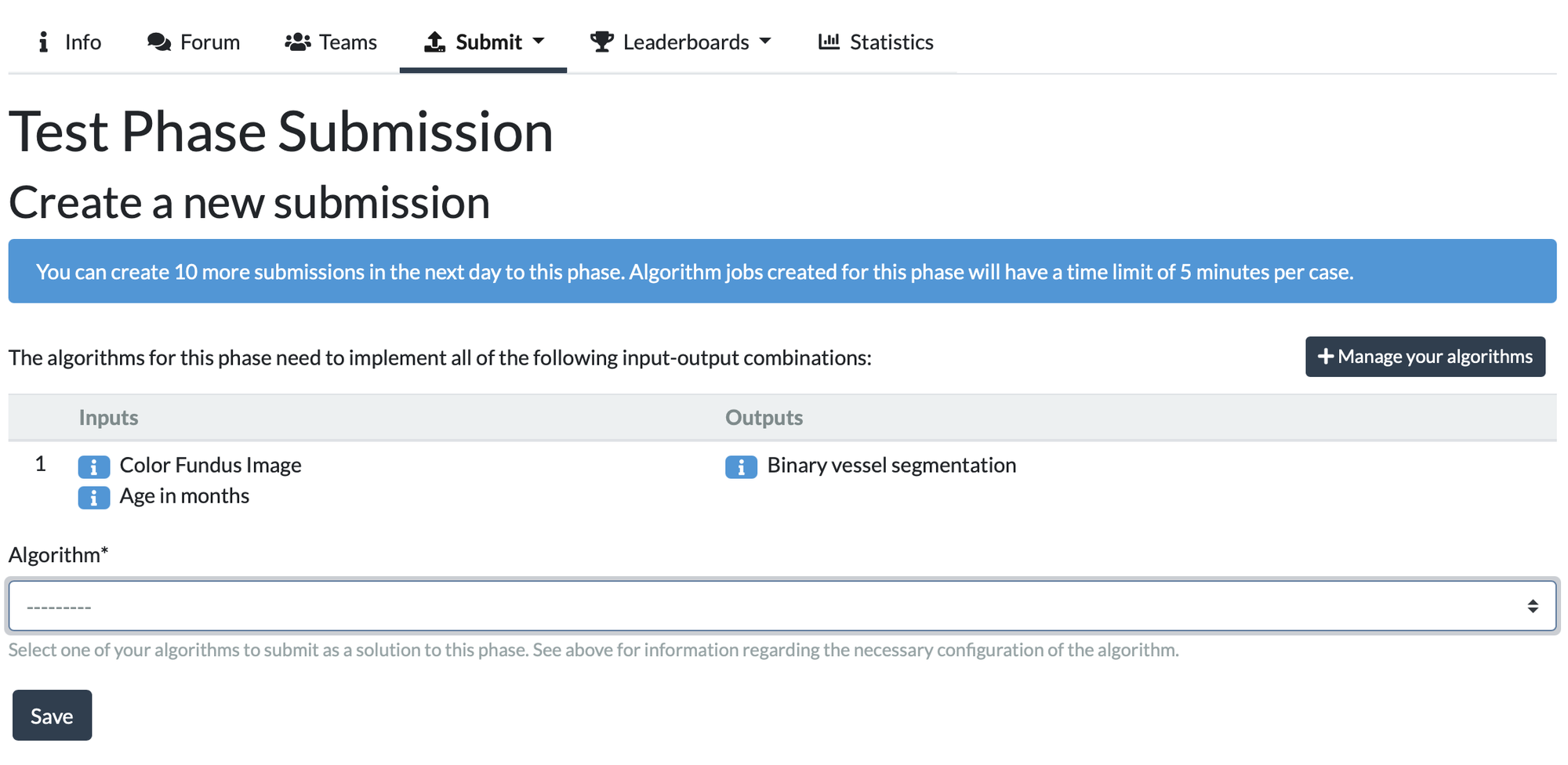Making a Challenge Submission¶
Submitting Your Algorithm Container¶
To submit to a challenge:
- Navigate to the Challenge page
- Click Submit and select the phase you'd like to submit to
- Choose from your existing Algorithms (you must be listed as an editor)
- Or click Manage your algorithms to create a new one
💡 Tip: You do not need to create a new algorithm for every update — simply upload a new container to your existing algorithm.

⚠️ Please test your algorithm container locally before uploading.
You can find detailed instructions in the container creation and local testing guide.
⚠️ Submission limits are in place to:
- Prevent test set overfitting
- Ensure fairness among participants
- Conserve compute resources
Read more on this in this blog post by the MIDOG 2021 organizers.
Submission Tips¶
- Ensure your user account is verified before submitting
- Configure GPU and memory requirements appropriately
- Be aware that maximum runtime per submission is determined by the challenge phase (typically between 1 minute and 1 hour)
- Container size should be under 10GB and only include the dependencies you need. Model weights should be uploaded separately.
Compress with gzip for upload:
bash docker save your_algorithm | gzip -c > YourAlgorithm.tar.gz -
Container validation may take up to 24 hours. If your container is not marked as active after that, please contact support.
-
To update your algorithm:
- Upload a new Docker container image on the Container Management page of your algorithm
- Or tag a new release if your algorithm is linked to a GitHub repository
- ⚠️ Updating your algorithm does not automatically create a new submission — you must submit it manually to the challenge phase again
-
Test before submitting:
- Use the "Try Out Algorithm" feature to upload test data and verify the outputs
- Make sure the outputs match what is expected by the challenge phase
- You can review logs and errors on the Results tab of your algorithm page
-
No internet access during execution:
- All dependencies and model weights must be bundled in your container
- You can simulate this locally by running:
bash docker run --network=none ... - If your container tries to access the internet, it will fail with errors like
Temporary failure in name resolution
-
Debugging failed submissions:
- Participants do not have access to submission logs (to avoid leaking test set information)
- Contact the challenge organizers if you need help identifying why your submission failed
- Tip: most issues can be caught by testing your container with "Try Out Algorithm" first
-
Be patient — evaluation may take time depending on system load
- If your submission has not been evaluated after 24 hours, feel free to reach out to support